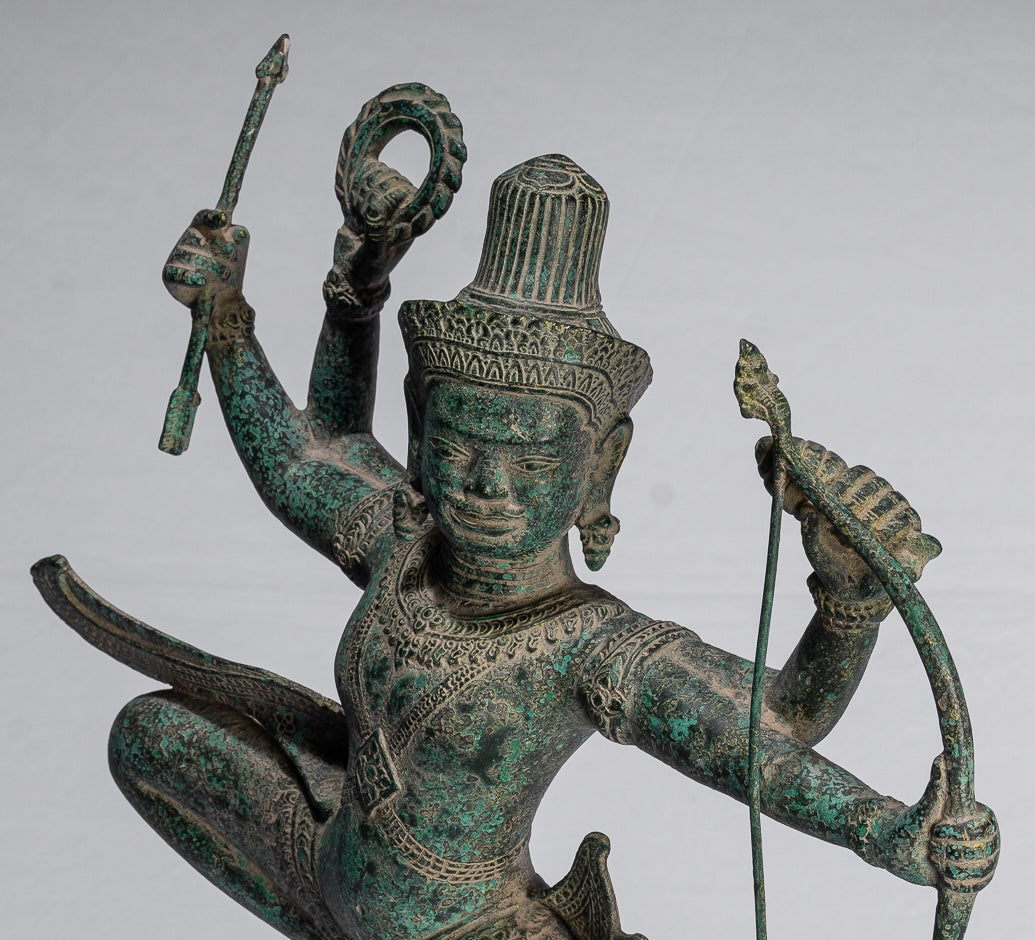
Dhanus (Dhanushya) in Hinduism: The Divine Bow and Its Symbolism
The Dhanus (or Dhanushya), the bow, holds immense spiritual, symbolic, and martial significance in Hinduism. It is more than just a weapon; it represents divine strength, cosmic order, and the power of dharma.
In Hindu mythology and sacred texts, the bow is closely associated with great warriors and deities, symbolizing the virtues of discipline, focus, and righteousness.
The Symbolism of Dhanus
In Hindu thought, the bow embodies multiple layers of meaning:
-
Dharma and Justice: The bow is often wielded by divine figures who protect righteousness and destroy evil forces.
-
Discipline and Focus: Mastery of archery requires deep concentration, patience, and skill, symbolizing spiritual focus.
-
Cosmic Balance: The bow’s curved shape represents the cosmic forces, and the act of releasing an arrow symbolizes action guided by wisdom.
-
Warrior Spirit and Courage: The bow represents valor and the commitment to uphold truth in battle and life.
Dhanus in Hindu Mythology
Several deities and legendary heroes in Hindu mythology wield divine bows, reinforcing the bow’s sacred and martial significance.
1. Lord Shiva and the Pinaka
Pinaka is the celestial bow of Lord Shiva, a weapon of immense power. According to mythology, Shiva used Pinaka to destroy evil and maintain cosmic balance. In the Ramayana, King Janaka possessed Shiva Dhanush, an incarnation of Pinaka, and it was used in the famous Swayamvara of Sita, where Lord Rama broke the bow to win her hand in marriage.
2. Lord Vishnu and Sharanga
Sharanga is the divine bow of Lord Vishnu, signifying his role as the preserver of dharma. Vishnu used this bow in his battles against demonic forces to protect the universe. In his incarnation as Lord Krishna, Vishnu grants Sharanga to Arjuna, reinforcing its importance in upholding righteousness.
3. Lord Rama and Kodanda
Kodanda is the personal bow of Lord Rama, one of Vishnu’s incarnations. It is prominently featured in the Ramayana, where Rama’s exceptional skill with the bow symbolizes his unwavering commitment to dharma. The Kodanda Ramaform of the deity depicts him holding his bow, signifying readiness to uphold righteousness.
4. Arjuna and Gandiva
Gandiva is the celestial bow wielded by Arjuna, the greatest archer in the Mahabharata. Given to him by Agni (the fire god), Gandiva is a weapon of immense strength and precision. It plays a crucial role in the Kurukshetra War, where Arjuna, guided by Krishna, uses it to uphold dharma.
Dhanurveda: The Science of Archery
Hinduism also has a dedicated treatise on archery, called Dhanurveda, which is a part of the Vedas. It covers techniques of warfare, bow construction, and spiritual aspects of combat. Dhanurveda was widely practiced by Kshatriyas (warrior class) as a crucial part of their training.
Dhanus in Rituals and Worship
-
Dhanurmasa: A sacred month in the Hindu calendar (mid-December to mid-January) associated with Vishnu worship, where the bow is metaphorically linked to spiritual discipline.
-
Kodanda Rama Temples: Several temples in India, such as the Kodanda Rama Temple in Andhra Pradesh, honor Lord Rama’s divine bow.
-
Archery Festivals and Practices: Traditional Indian martial arts like Kalaripayattu include elements of archery, preserving the legacy of Dhanurveda.
Conclusion
The Dhanus is not just a weapon but a powerful spiritual and cultural symbol in Hinduism. Whether in the hands of Shiva, Vishnu, Rama, or Arjuna, it signifies the eternal battle between good and evil, the discipline needed for spiritual growth, and the commitment to uphold righteousness.
The divine bow continues to inspire devotees and warriors alike, making it an enduring emblem of Hindu philosophy and mythology.
















